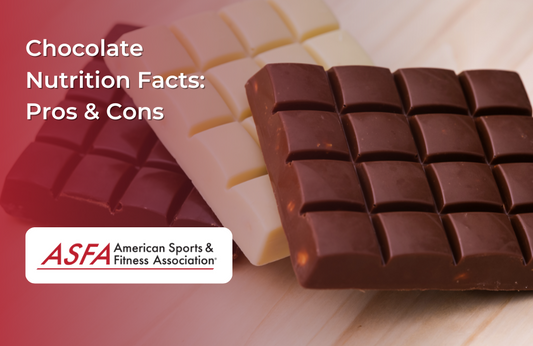Deadlifting is a wonderful exercise. It strengthens your core, back, and arms—not to mention your biceps and quads. But if this impressive feat of strength is going to be done properly, there are some important things to keep in mind. Improving your deadlift technique boils down to two basic concepts: keeping everything tight (back straight, shoulders pulled back) and using momentum from your legs instead of relying on arm strength alone. Here's how it all works:
Pull your shoulders back
A deadlift is a great exercise for strengthening your core and lower back and developing grip strength. However, if you're not careful with your form, it can also cause injury to your back and shoulders. To prevent this from happening, keep these tips in mind:
● Pull your shoulders back and down--this will help prevent overuse injuries like rotator cuff tears or shoulder impingement syndrome (a condition where the tendons surrounding the biceps tendon become inflamed).
● Keep your arms straight--you should not bend them during any part of this exercise!
If you have trouble keeping your lower back flat, consider pushing your hips forward slightly. This will help you keep the bar in line with your body and avoid rounding your lower back. Keep your elbows tucked in--this will prevent you from straining your shoulders and upper back. Do not lift your feet off the floor or swing them during any part of this exercise. Read More: 5 Tips for Weightlifters to Increase Lifting StrengtKeep the weight low; it should be challenging but not impossible. If you can't do a full rep, don't lift extra weight to compensate for it. This can strain your back and lead to injury. Do this exercise slowly--don't rush through it, or you'll end up with bad form. Use only as much weight as you need to complete each rep. To increase difficulty, lock your knees as you perform this exercise (if you're using dumbbells). If you find this exercise too difficult, try holding onto something for balance during the entire movement (see next point). If going at a slower pace is still too challenging for you, try.
Keep your knees slightly bent, but don't let them bend too much
Keeping your knees slightly bent is the next key to improving your deadlift technique. This will help you keep your lower back from rounding and make it easier for you to keep your shoulders back.
Remember that if you have long legs, this may mean that the bar is closer to touching the top of your feet than if you have shorter legs--but don't let that fool you into thinking this means the bar should rest on the tops of your feet! If we allow ourselves too much range of motion at our hips (or "flexibility"), then it can actually be more dangerous because now there's even more room for error before we start lifting weights off the floor again...
The third thing to remember is that you should feel the weight in your heels. This will help you keep proper posture and prevent back pain from occurring. Your knees should be slightly bent, and your feet should always be flat on the ground.
Arch your lower back
The deadlift is a great exercise for strengthening your back, but it's important to maintain proper form. Here are some tips for keeping your spine in line:
● Keep your back straight, don't round it or let it sag. This will help prevent injury and ensure you use the right muscles during each rep.
● Arching also helps with this; if you're having trouble keeping an arch, try holding onto something so that you can feel exactly how much tension there should be in each part of your body (see next point).
Don't arch your back--this will put pressure on your spine and can cause back pain. Instead, keep your spine as straight as possible while doing this exercise.
Keep your head and eyes up
The most important thing to remember is to keep your head up and your eyes forward. This will ensure you look straight ahead, not down or at the floor. Don't look at your feet or the bar, as this can lead to back pain and injury over time. Also, avoid looking at anything else like the ceiling or ground; this will help prevent neck strain, injury, and poor form overall!
Second, keep your head up and your eyes forward. This will help you maintain proper posture and keep your back straight. It's also important to avoid looking down at the barbell during the lift; if you're trying to lift more weight than you've ever lifted before, this can be tempting--but it's not a good idea!
You should also avoid looking at anything else like the ceiling or ground; this will help prevent neck strain, injury, and poor form overall! Third, keep your back straight and chest up. Maintaining good posture is an important part of weightlifting, especially when lifting heavy weights.
Don't pull with your arms--use your legs.
The deadlift is a compound exercise that works several muscles at once. It's also one of the most effective ways to build strength in your lower body, including hamstrings, glutes, and quadriceps. To complete this movement correctly, you'll need to keep your arms straight and use them only for balance; don't bend or twist them as you lift the weight off the floor--your legs should do all the heavy lifting!
To do this properly:
● Keep your back straight, and don't arch it as you stand up with the weight (this will strain ligaments).
● Keep your head up and your eyes looking forward so they don't move side-to-side during each rep (this can lead to injury).
● Don't let knees bend too much--they should remain almost straight throughout every repetition of each set (they'll naturally bend slightly when returning weights onto the floor).
Improving your deadlift is all about getting comfortable with proper form.
When you're improving your deadlift, focusing on proper form is important. That's why we recommend using a barbell and avoiding kettlebells until you've mastered this lift.
Don't worry about how much weight you're lifting or how many repetitions of the exercise you can do in a set period--instead, think about getting comfortable with proper posture and movement patterns so that when it comes time for competition (or just for fun), everything will go smoothly without any kinks or snags.
Keep your back straight, don't round it or let it sag. This will help prevent injury and ensure you use the right muscles during each rep. Arching also helps with this; if you're having trouble keeping an arch, try holding onto something so that you can feel exactly how much tension there should be in each part of your body (see next point)3. Keep Your Back Straight, Don't Arch It: When you squat down to the bar, your back should be straight but not arched. You don't want to stick out your chest or round your shoulders forward; this can lead to injury over time and poor form overall!
Conclusion
In conclusion, deadlifting is a highly effective exercise that can help you build strength in multiple muscle groups. By keeping your form tight and using the right technique, you can maximize the benefits of this exercise and avoid injury. So, whether you're a beginner or an experienced lifter, remember to focus on maintaining proper form and using your legs to generate momentum. With practice, you can perfect your deadlift technique and take your fitness to the next level.





